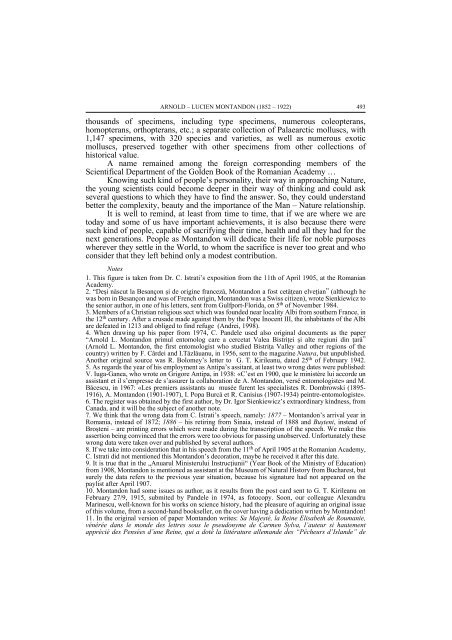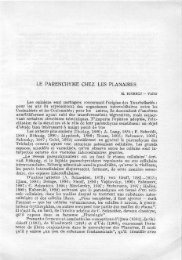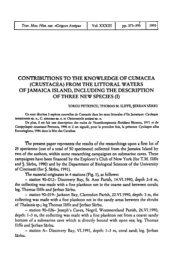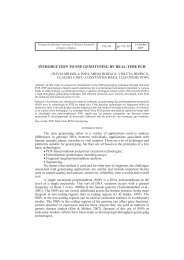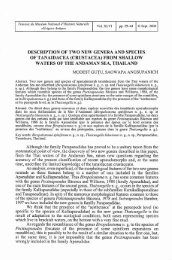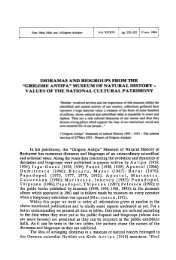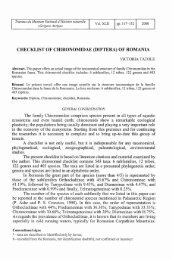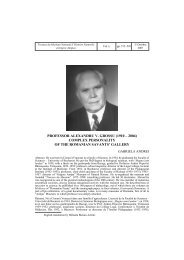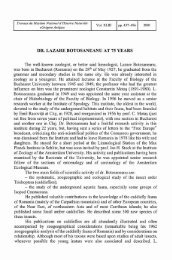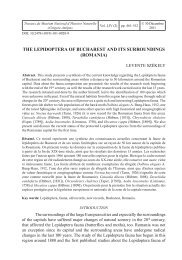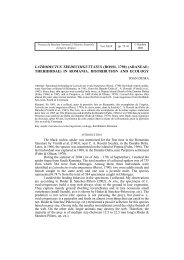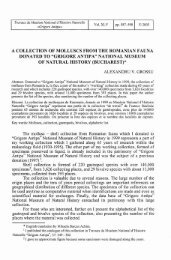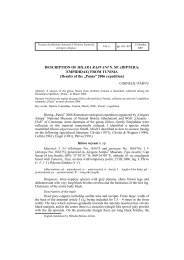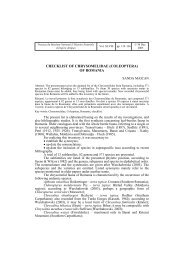ARNOLD - LUCIEN MONTANDON (1852 – 1922 - Travaux
ARNOLD - LUCIEN MONTANDON (1852 – 1922 - Travaux
ARNOLD - LUCIEN MONTANDON (1852 – 1922 - Travaux
You also want an ePaper? Increase the reach of your titles
YUMPU automatically turns print PDFs into web optimized ePapers that Google loves.
<strong>ARNOLD</strong> <strong>–</strong> <strong>LUCIEN</strong> <strong>MONTANDON</strong> (<strong>1852</strong> <strong>–</strong> <strong>1922</strong>) 493<br />
thousands of specimens, including type specimens, numerous coleopterans,<br />
homopterans, orthopterans, etc.; a separate collection of Palaearctic molluscs, with<br />
1,147 specimens, with 320 species and varieties, as well as numerous exotic<br />
molluscs, preserved together with other specimens from other collections of<br />
historical value.<br />
A name remained among the foreign corresponding members of the<br />
Scientifical Department of the Golden Book of the Romanian Academy …<br />
Knowing such kind of people’s personality, their way in approaching Nature,<br />
the young scientists could become deeper in their way of thinking and could ask<br />
several questions to which they have to find the answer. So, they could understand<br />
better the complexity, beauty and the importance of the Man <strong>–</strong> Nature relationship.<br />
It is well to remind, at least from time to time, that if we are where we are<br />
today and some of us have important achievements, it is also because there were<br />
such kind of people, capable of sacrifying their time, health and all they had for the<br />
next generations. People as Montandon will dedicate their life for noble purposes<br />
wherever they settle in the World, to whom the sacrifice is never too great and who<br />
consider that they left behind only a modest contribution.<br />
Notes<br />
1. This figure is taken from Dr. C. Istrati’s exposition from the 11th of April 1905, at the Romanian<br />
Academy.<br />
2. “Deºi nãscut la Besançon ºi de origine francezã, Montandon a fost cetãþean elveþian” (although he<br />
was born in Besançon and was of French origin, Montandon was a Swiss citizen), wrote Sienkiewicz to<br />
the senior author, in one of his letters, sent from Gulfport-Florida, on 5 th of November 1984.<br />
3. Members of a Christian religious sect which was founded near locality Albi from southern France, in<br />
the 12 th century. After a crusade made against them by the Pope Inocent III, the inhabitants of the Albi<br />
are defeated in 1213 and obliged to find refuge (Andrei, 1998).<br />
4. When drawing up his paper from 1974, C. Pandele used also original documents as the paper<br />
“Arnold L. Montandon primul entomolog care a cercetat Valea Bistriþei ºi alte regiuni din þarã”<br />
(Arnold L. Montandon, the first entomologist who studied Bistriþa Valley and other regions of the<br />
country) written by F. Cârdei and I.Tãzlãuanu, in 1956, sent to the magazine Natura, but unpublished.<br />
Another original source was R. Bolomey’s letter to G. T. Kirileanu, dated 25 th of February 1942.<br />
5. As regards the year of his employment as Antipa’s assitant, at least two wrong dates were published:<br />
V. Iuga-Ganea, who wrote on Grigore Antipa, in 1938: «C’est en 1900, que le ministère lui accorde un<br />
assistant et il s’empresse de s’assurer la collaboration de A. Montandon, versé entomologiste» and M.<br />
Bãcescu, in 1967: «Les premiers assistants au musée furent les specialistes R. Dombrowski (1895-<br />
1916), A. Montandon (1901-1907), I. Popa Burcã et R. Canisius (1907-1934) peintre-entomologiste».<br />
6. The register was obtained by the first author, by Dr. Igor Sienkiewicz’s extraordinary kindness, from<br />
Canada, and it will be the subject of another note.<br />
7. We think that the wrong data from C. Istrati’s speech, namely: 1877 <strong>–</strong> Montandon’s arrival year in<br />
Romania, instead of 1872; 1886 <strong>–</strong> his retiring from Sinaia, instead of 1888 and Buºteni, instead of<br />
Broºteni <strong>–</strong> are printing errors which were made during the transcription of the speech. We make this<br />
assertion being convinced that the errors were too obvious for passing unobserved. Unfortunately these<br />
wrong data were taken over and published by several authors.<br />
8. If we take into consideration that in his speech from the 11 th of April 1905 at the Romanian Academy,<br />
C. Istrati did not mentioned this Montandon’s decoration, maybe he received it after this date.<br />
9. It is true that in the „Anuarul Ministerului Instrucþiunii“ (Year Book of the Ministry of Education)<br />
from 1908, Montandon is mentioned as assistant at the Museum of Natural History from Bucharest, but<br />
surely the data refers to the previous year situation, because his signature had not appeared on the<br />
paylist after April 1907.<br />
10. Montandon had some issues as author, as it results from the post card sent to G. T. Kirileanu on<br />
February 27/9, 1915, submited by Pandele in 1974, as fotocopy. Soon, our colleague Alexandru<br />
Marinescu, well-known for his works on science history, had the pleasure of aquiring an original issue<br />
of this volume, from a second-hand bookseller, on the cover having a dedication writen by Montandon!<br />
11. In the original version of paper Montandon writes: Sa Majesté, la Reine Elisabeth de Roumanie,<br />
vénérée dans le monde des lettres sous le pseudonyme de Carmen Sylva, l’auteur si hautement<br />
apprécié des Pensées d’une Reine, qui a doté la littérature allemande des “Pêcheurs d’Islande” de


